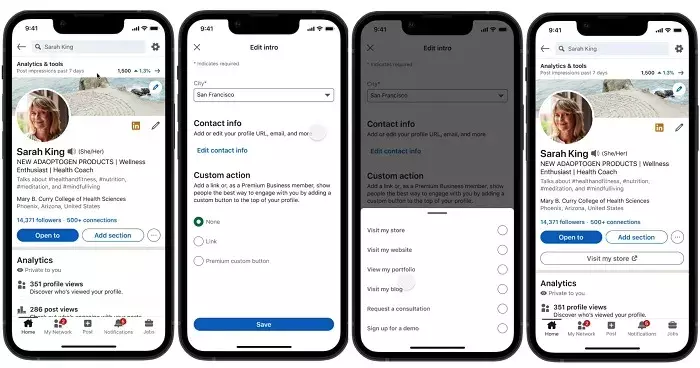In a surprising turn of events, LinkedIn has announced the removal of the option for users, particularly Premium subscribers, to add custom links to their profiles. This shift signals a broader reconsideration of how the platform balances user engagement with brand integrity. The introduction of custom link options in 2023 was a notable stride for the platform, providing users an avenue to showcase their personal brands and drive traffic to their websites or businesses. Yet, with this recent decision, the platform seems to be prioritizing a different vision—one that potentially narrows user autonomy in favor of maintaining a cohesive brand narrative.
Given that LinkedIn has 175 million Premium subscribers—an impressive figure that reflects a 50% growth over the past two years—this move is particularly surprising. While the company states that the removal of custom links aims to redirect resources toward features that provide greater value to its members, one must question whether the decision aligns with the needs of individual users craving visibility in their personal brand narratives.
The Implication of Removed Autonomy
The inability to add new custom links poses a concerning restriction for users eager to refine their profiles for optimal engagement. If you were able to leverage a ‘Visit my Website’ button previously, you now face an unsettling limitation: if you choose to remove it, the option for reintegration vanishes. This effectively locks you into a static presentation of your online presence, which hardly aligns with the dynamic nature of the professional landscape.
It’s troubling that LinkedIn would take such a critical asset away without clearly justifying the decision. While the company has indicated that they want to eliminate offerings that do not provide significant value, one must consider the sizable portion of users who likely utilized these custom call-to-action (CTA) buttons to enhance client interaction or direct potential employers to relevant work. Are we to assume, then, that the divergence in objectives between corporate brand pages—where custom buttons thrive—and individual profiles is what’s guiding this move?
The Pro-Business yet Counter-Individual Focus
Notably, LinkedIn also provides Premium Company Pages with custom CTA buttons prominently displayed, yielding significantly higher engagement rates. Reports indicate that these pages receive over ten times more button clicks compared to their individual counterparts. By promoting brand visibility and interaction through premium features, LinkedIn appears to place a higher value on corporate profiles than personal profiles. This underscores a troubling divide in the platform’s acknowledgment of the role individuals play in driving its content—a stark reality for creators who contribute valuable insights and unique perspectives.
The company’s emphasis on business engagement further complicates its stated mission of fostering professional growth among individuals. By introducing barriers to personal visibility options while simultaneously augmenting features for brands, LinkedIn risks alienating those who initially sought the platform for personal networking and brand development. Would it not serve LinkedIn better to cultivate a more balanced ecosystem where individuals can thrive alongside businesses? The departure from empowering individual creators aboard the platform could stymie not only engagement but also batter the authenticity that has drawn users to LinkedIn since its inception.
Speculative Motivations Behind the Decision
Despite LinkedIn not providing explicit reasoning for this change, speculation surrounds the true motivations. The possibility of questionable link usage—such as adult content or unrelated advertisements—could be at play here. It’s plausible that the platform is trying to mitigate risks associated with link integrity, especially as it attempts to curate a professional space that is strictly about career growth and opportunities. However, do those risks outweigh the benefits of facilitating diverse interactions and valid connections on their medium? This scenario calls into question LinkedIn’s broader strategy and whether it understands the social dynamics at play among its user base.
In this digital age, the freedom to create and manage one’s professional narrative is paramount, and restricting those avenues could usher in a shift that leaves many users disillusioned. Without transparency regarding such changes, LinkedIn stands to lose the goodwill it has enjoyed among its community — one built on collaboration, growth, and empowerment.


Leave a Reply